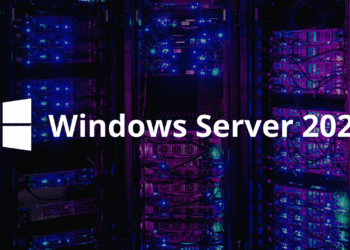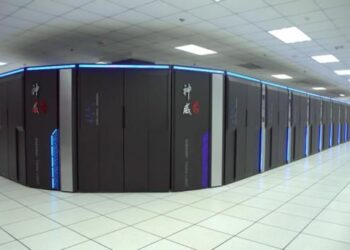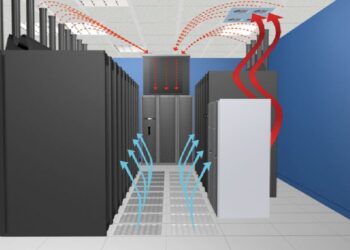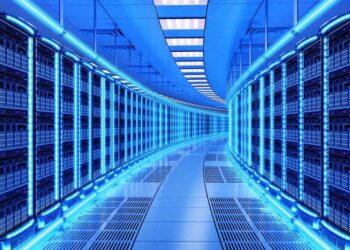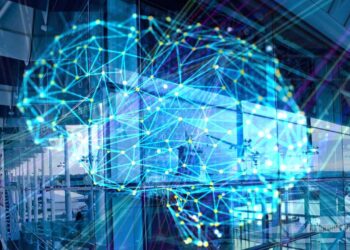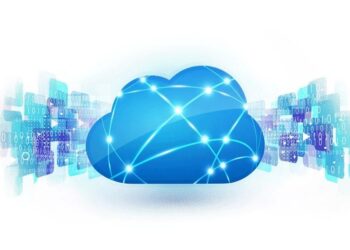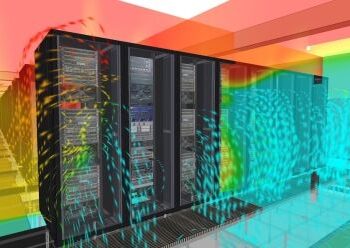The server market is undergoing a remarkable transformation as we approach 2025, driven by rapid technological advancements, evolving business needs, and increasing demands for scalability and efficiency. This comprehensive article examines the various factors influencing server market dynamics, explores the impact of emerging technologies, and provides insights into regional variations and future predictions. The analysis covers historical context, current trends, and forecasts for the near future, all while focusing on the implications for data centers, cloud computing, and IT infrastructure. Whether you are an IT professional, business strategist, or technology enthusiast, understanding these dynamics is essential for making informed decisions in a rapidly evolving digital landscape.
The global server market has historically been one of the most critical components of IT infrastructure, underpinning everything from enterprise applications to cloud services. As we step into 2025, the sector is characterized by disruptive innovations, a surge in data-driven applications, and a shift toward more sustainable and energy-efficient solutions. This article delves deep into the factors reshaping the server industry and examines how businesses can leverage these changes to improve performance, reduce costs, and remain competitive.
The significance of this analysis is magnified by the growing interdependence of digital services, where uptime and performance are paramount. With technologies such as artificial intelligence (AI), edge computing, and software-defined infrastructures on the rise, the server market is poised to become even more dynamic. In this context, understanding the underlying trends and drivers is critical for IT leaders, investors, and policymakers alike.
Evolution of the Server Market: Past, Present, and Future
The server market has evolved considerably over the past few decades. Initially, servers were primarily physical machines housed in dedicated data centers. Over time, the introduction of virtualization and cloud computing transformed this landscape, enabling organizations to deploy resources more flexibly and cost-effectively.
Historical Overview
Historically, the evolution of servers can be traced through several key phases:
A. Mainframe Era:
Early computing relied on massive mainframes that served multiple users and tasks simultaneously.
B. Client-Server Model:
The rise of personal computers and networked environments led to the development of dedicated servers that managed data and applications for clients.
C. Virtualization and Cloud Computing:
Virtualization enabled the consolidation of server workloads, leading to improved efficiency and resource utilization. The advent of cloud computing further disrupted traditional models, offering scalable, on-demand services.
D. Edge Computing:
More recently, the emergence of edge computing has shifted some server functions closer to the end user, reducing latency and improving performance.
Current Market Dynamics
Today, the server market is a blend of traditional data center solutions and innovative architectures. Companies are increasingly investing in hybrid solutions that integrate cloud, on-premises, and edge infrastructures. This shift is driven by several factors:
- Increased Data Volumes: The explosion of big data, IoT devices, and real-time analytics requires servers that can handle vast amounts of information efficiently.
- Demand for Scalability: Businesses need flexible, scalable solutions to adapt to fluctuating workloads and ensure uninterrupted service.
- Energy Efficiency: With rising energy costs and environmental concerns, there is a growing emphasis on energy-efficient server designs.
- Security: Enhanced cybersecurity measures are essential as servers become prime targets for sophisticated cyber threats.
Looking Ahead: The Future Landscape
By 2025, the server market is expected to further integrate emerging technologies, creating a more robust, efficient, and secure environment. Innovations in hardware, software, and networking are anticipated to drive performance gains and reduce operational costs, ensuring that the server market remains at the forefront of digital transformation.
Key Trends Driving Server Market Dynamics
Several trends are fundamentally reshaping the server market, influencing both hardware development and deployment strategies. These trends not only address current challenges but also set the stage for future innovations.
A. Cloud Adoption and Hybrid Models
The shift toward cloud computing continues unabated, with many organizations embracing hybrid models that combine the benefits of both public and private cloud infrastructures. This trend is driven by the need for scalability, flexibility, and cost efficiency. Hybrid cloud solutions allow businesses to run critical applications on-premises while leveraging the cloud for additional capacity and disaster recovery.
B. Edge Computing Expansion
Edge computing is gaining traction as more data processing tasks move closer to the source of data generation. This reduces latency, improves performance, and is particularly beneficial for applications requiring real-time data processing. Edge servers are becoming indispensable in sectors like autonomous vehicles, smart cities, and industrial IoT.
C. Data Center Modernization
Modern data centers are undergoing significant transformations, with a focus on:
A. Automation: Advanced monitoring and management systems powered by AI and machine learning are streamlining operations.
B. Scalability: Modular designs and flexible infrastructure allow data centers to expand capacity with minimal downtime.
C. Sustainability: There is an increasing push toward green data centers that use renewable energy sources and energy-efficient technologies.
D. High-Performance Computing (HPC)
The demand for high-performance computing is rising, driven by the need for complex simulations, data analytics, and AI research. HPC servers, with their enhanced processing power and parallel computing capabilities, are critical for research institutions, financial services, and other industries that require rapid computation.
E. Software-Defined Infrastructure (SDI)
Software-defined infrastructure is revolutionizing how servers are managed and optimized. By abstracting the hardware layer, SDI allows for more agile, scalable, and automated management of server resources. This trend is particularly important as it enables organizations to dynamically allocate resources based on workload demands.
Technological Innovations Shaping the 2025 Server Market
Technological breakthroughs continue to redefine the capabilities of servers. In 2025, several innovations are expected to have a profound impact on the server market, driving performance improvements and opening new opportunities.
A. Artificial Intelligence and Machine Learning Integration
AI and machine learning are increasingly being integrated into server management and operation. These technologies enable:
A. Predictive Maintenance: AI algorithms analyze server performance data to predict potential failures and schedule maintenance proactively.
B. Resource Optimization: Machine learning models dynamically allocate resources to maximize efficiency and reduce energy consumption.
C. Security Enhancements: AI-powered systems can detect unusual patterns and potential security breaches, thereby fortifying server security.
B. Quantum Computing Prospects
Although still in its nascent stages, quantum computing holds the promise of revolutionizing server processing power. The integration of quantum principles into server architecture could eventually lead to:
A. Exponential Speed Improvements: Quantum processors can solve complex problems at speeds unattainable by classical processors.
B. Advanced Encryption: Enhanced security measures could emerge from quantum-resistant encryption algorithms.
C. Innovative Applications: New applications in cryptography, optimization, and simulation will drive further market evolution.
C. Enhanced Hardware Components
Hardware advancements are central to the server market’s evolution. Key innovations include:
A. NVMe Storage Solutions: Non-Volatile Memory Express (NVMe) technology offers significantly faster data transfer speeds compared to traditional storage solutions.
B. GPU Acceleration: Graphics Processing Units (GPUs) are increasingly used for parallel processing tasks, especially in AI and machine learning applications.
C. Energy-Efficient Processors: Modern processors are designed to provide higher performance per watt, helping reduce overall energy consumption.
D. Software-Defined Networking (SDN)
Software-defined networking is transforming how servers communicate within data centers. SDN offers:
A. Centralized Management: Simplified network configuration and management through a centralized software controller.
B. Flexibility: The ability to quickly adapt network configurations in response to changing demands.
C. Cost Savings: Reduced need for expensive, proprietary hardware solutions.

Impact of Cloud and Virtualization on the Server Ecosystem
The integration of cloud computing and virtualization has been a game changer for the server market. These technologies enable businesses to overcome limitations associated with traditional server deployments by offering more flexible, scalable, and cost-effective solutions.
A. Benefits of Cloud Adoption
Cloud computing offers numerous advantages, including:
A. Scalability: Cloud services provide on-demand access to computing resources, enabling organizations to scale up or down based on workload requirements.
B. Cost Efficiency: By leveraging cloud resources, companies can reduce capital expenditures on physical infrastructure and shift to an operational expense model.
C. Enhanced Collaboration: Cloud platforms facilitate real-time collaboration, supporting remote work and distributed teams.
B. The Role of Virtualization
Virtualization has been pivotal in optimizing server usage. It allows multiple virtual machines (VMs) to run on a single physical server, which maximizes resource utilization and minimizes energy waste. Virtualization technologies provide:
A. Isolation: Each VM operates independently, ensuring that issues in one do not affect others.
B. Flexibility: Virtual environments can be easily adjusted to meet specific workload demands.
C. Simplified Management: Centralized management consoles enable administrators to monitor and control multiple VMs efficiently.
C. Hybrid and Multi-Cloud Strategies
Organizations are increasingly adopting hybrid and multi-cloud strategies to harness the benefits of both private and public cloud infrastructures. These approaches offer:
A. Flexibility: Businesses can choose the best environment for each workload.
B. Redundancy: Multi-cloud strategies provide backup options to ensure business continuity.
C. Cost Optimization: Hybrid models enable organizations to balance performance requirements with budget constraints.
Market Challenges and Concerns
Despite the promising advancements in server technology, the market faces several challenges that could impede growth if not addressed adequately.
A. Supply Chain Disruptions
Global supply chain issues have had a significant impact on server manufacturing. Factors contributing to these challenges include:
A. Component Shortages: Shortages in key hardware components can delay production and increase costs.
B. Logistical Complexities: Transportation delays and geopolitical tensions add uncertainty to the supply chain.
C. Dependence on Single Sources: Overreliance on specific suppliers or regions heightens vulnerability to disruptions.
B. Energy Consumption and Environmental Impact
As data centers expand to meet growing demand, energy consumption becomes a critical concern. High energy usage not only increases operational costs but also contributes to environmental challenges. Key considerations include:
A. Green Technologies: Adoption of renewable energy sources and energy-efficient hardware is essential.
B. Carbon Footprint: Reducing emissions is critical for companies aiming to meet sustainability goals.
C. Regulatory Compliance: Increasingly stringent environmental regulations may necessitate significant investments in greener infrastructure.
C. Security Threats
The expanding digital landscape exposes servers to a broad array of security threats. Cyberattacks, data breaches, and system vulnerabilities are constant risks. To mitigate these issues, organizations must focus on:
A. Robust Cybersecurity Protocols: Implementing multi-layered security measures to safeguard data and applications.
B. Regular Updates and Patching: Ensuring that systems are continuously updated to address emerging vulnerabilities.
C. Employee Training: Educating staff on best practices to minimize the risk of human error.
Regional Variations in Server Market Dynamics
The evolution of the server market does not occur uniformly across the globe. Regional variations in economic conditions, technological infrastructure, and regulatory environments lead to differing dynamics in various parts of the world.
A. North America
North America remains a leader in technology and innovation, with several key trends:
A. Robust Cloud Adoption: Major technology companies and startups alike leverage advanced cloud infrastructures.
B. Innovation Hubs: Silicon Valley and other tech centers drive research and development in server technologies.
C. Regulatory Environment: Progressive policies encourage investments in green technologies and cybersecurity.
B. Europe
Europe presents a unique blend of innovation and regulatory rigor:
A. Data Privacy Focus: Strict regulations such as GDPR influence server management and data handling practices.
B. Sustainable Initiatives: European countries are at the forefront of promoting energy-efficient data centers.
C. Collaborative Research: Public-private partnerships drive advancements in server technology and infrastructure.
C. Asia-Pacific
The Asia-Pacific region is experiencing rapid growth in its server market:
A. Economic Expansion: Emerging economies in the region are investing heavily in IT infrastructure.
B. Technological Adoption: High smartphone penetration and digital services drive demand for advanced servers.
C. Local Manufacturing: Increased local production of server hardware reduces dependency on imports and fosters innovation.
D. Emerging Markets
Emerging markets worldwide offer both challenges and opportunities:
A. Infrastructure Development: Many emerging economies are investing in modernizing their IT infrastructure.
B. Cost Sensitivity: Budget constraints drive demand for cost-effective, scalable solutions.
C. Digital Transformation: Government initiatives to digitize public services are accelerating the adoption of server technologies.

Future Predictions and Trends Beyond 2025
Looking beyond 2025, several emerging trends are likely to continue shaping the server market. Industry experts anticipate a continued convergence of technologies that will further enhance performance, efficiency, and security.
A. Continued Integration of AI and Automation
The integration of AI in server management is expected to deepen, leading to:
A. Self-Optimizing Systems: Servers that continuously monitor and adjust performance parameters in real time.
B. Automated Security Responses: AI-driven systems capable of detecting and mitigating cyber threats automatically.
C. Enhanced User Experience: Improved resource allocation that delivers faster and more reliable services to end users.
B. Advancements in Server Architecture
Server designs will continue to evolve, with trends such as:
A. Modular Architectures: Systems that allow for easy expansion and upgrade without extensive downtime.
B. Convergence of Compute and Storage: Integrated solutions that simplify management and reduce latency.
C. Custom Hardware Solutions: Tailored components designed to meet the specific needs of high-performance applications.
C. Expansion of Edge Computing
Edge computing is expected to become more prevalent as data processing moves closer to the source:
A. Localized Data Centers: Smaller, regional data centers that reduce latency and improve performance.
B. Integration with IoT: Seamless integration of edge computing with the growing number of IoT devices.
C. Real-Time Analytics: Enhanced capabilities for processing and analyzing data in real time.
D. Evolution of Cloud Services
Cloud computing will likely experience further innovation, including:
A. Serverless Architectures: More businesses will adopt serverless models that abstract infrastructure concerns.
B. Enhanced Security Models: Advanced encryption and security protocols designed specifically for cloud environments.
C. Multi-Cloud Strategies: Organizations will continue to adopt multi-cloud environments to optimize performance and cost.
E. The Role of Quantum and Next-Generation Technologies
Though still emerging, next-generation technologies such as quantum computing hold promise for the future:
A. Breakthrough Performance: Potentially transformative processing speeds for complex computations.
B. Revolutionary Applications: New use cases in areas such as cryptography, simulations, and complex data analysis.
C. Complementary Solutions: Integration with classical computing infrastructures to provide hybrid solutions.
Conclusion
The server market in 2025 is set to be one of the most dynamic sectors in the technology landscape. Driven by rapid innovation in AI, cloud computing, and hardware design, servers are evolving from traditional physical machines to sophisticated, software-defined infrastructures that power modern digital services. The move toward hybrid models, increased energy efficiency, and enhanced security measures will define how data centers operate in the near future.
As regional dynamics and emerging technologies continue to shape the market, organizations must remain agile and forward-thinking to capitalize on the opportunities presented by these trends. Whether you are managing an enterprise data center or strategizing investments in IT infrastructure, staying informed about these developments will be crucial for long-term success.
In summary, the key takeaways include:
A. The rapid evolution from traditional data centers to cloud and edge computing environments.
B. The pivotal role of AI, automation, and advanced hardware in shaping server performance and security.
C. The importance of sustainable practices and energy-efficient designs in reducing operational costs and environmental impact.
D. The need for robust cybersecurity measures to counter an increasingly sophisticated threat landscape.
E. The varying market dynamics across different regions, highlighting both challenges and opportunities for growth.
By understanding these dynamics, businesses and technology professionals can make strategic decisions that not only improve operational efficiency but also ensure resilience in a competitive market. The server market’s trajectory points to an era of innovation where flexibility, scalability, and sustainability are paramount.


